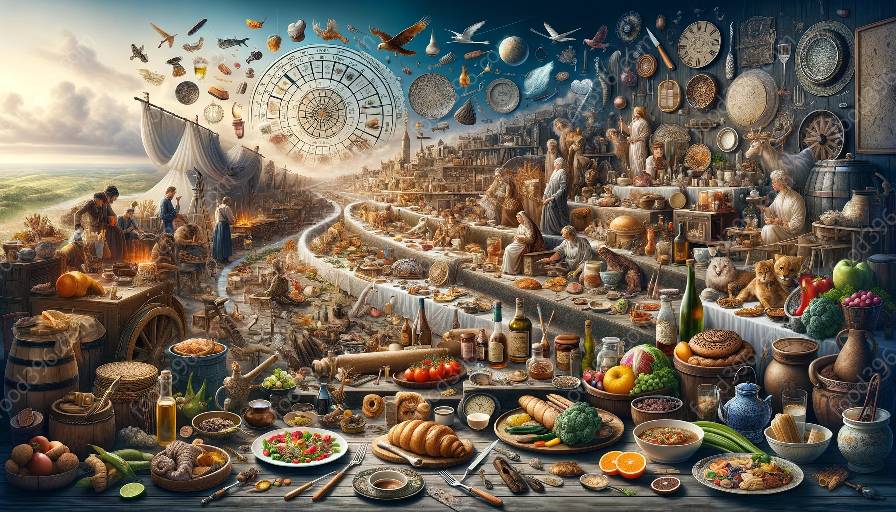Italian cheese-making traditions hold a special place in the heart of the country's rich culinary history. From the humble farmhouses of rural Italy to the world-renowned cheese markets of the big cities, the art of crafting fine Italian cheeses has been passed down through generations, creating a legacy deeply intertwined with the broader history of Italian cuisine and the global culinary landscape.
The Roots of Italian Cheese-making Traditions
The origins of Italian cheese-making traditions can be traced back to the ancient Roman era, where the techniques and processes for making cheese were developed and refined. The Roman Empire's expansion brought about the proliferation of cheese-making across different regions of Italy, each contributing to the diverse array of cheeses that Italy is known for today.
Diversity and Regional Variations
One of the most compelling aspects of Italian cheese-making traditions is the incredible diversity and regional variations found throughout the country. Each region boasts its own unique cheese-making techniques and traditions, often influenced by specific local environmental factors, such as the quality of the pasture, the breed of the animals, and the climate.
For example:
- The mountainous regions of Northern Italy, such as Lombardy and Piedmont, are famous for their production of rich and creamy cheeses like Gorgonzola and Taleggio, thanks to the lush alpine pastures and traditional methods of aging.
- The central region of Tuscany is renowned for pecorino cheese, made from the milk of sheep that graze the picturesque countryside, imparting a distinct flavor that reflects the terroir of the area.
- In the southern region of Campania, buffalo milk mozzarella thrives, creating a cheese that is soft, fresh, and full of flavor, representing the bounty of the area's fertile lands.
The Importance of Tradition
Italian cheese-making traditions are deeply rooted in the cultural and agricultural heritage of the country. The knowledge and expertise required to create these artisanal cheeses have been passed down through families and communities for centuries, forming an integral part of Italian identity and pride.
The artisanal methods used in cheese-making reflect a commitment to tradition and quality, with many producers adhering to time-honored techniques that have been preserved and protected through certification schemes such as PDO (Protected Designation of Origin) and PGI (Protected Geographical Indication).
Italian Cheese in Cuisine History
The influence of Italian cheese-making traditions extends beyond the boundaries of Italy, leaving an indelible mark on global cuisine history. Italian cheeses have become synonymous with excellence, flavor, and craftsmanship, earning a revered status in the culinary world.
Adding Italian cheese to a dish enhances its flavor and texture, elevating the overall dining experience. From the melting gooeyness of mozzarella on a wood-fired pizza to the sharp tang of Parmigiano-Reggiano grated over a bowl of pasta, Italian cheeses have become essential ingredients in countless beloved recipes across the globe.
Discovering Italian Cheese-making Traditions
Whether you are a cheese enthusiast, a culinary explorer, or a history buff, delving into Italian cheese-making traditions can provide a captivating journey through the cultural and gastronomic tapestry of Italy. From visiting quaint cheese farms nestled in the rolling hills of Tuscany to exploring bustling cheese markets in cities like Bologna and Milan, there are endless opportunities to experience the authentic and time-honored craft of Italian cheese-making.
Exploring the rich heritage of Italian cheese-making traditions offers a deeper appreciation for the artistry and dedication that goes into creating these iconic cheeses, and an understanding of the profound connection between food, culture, and history.

